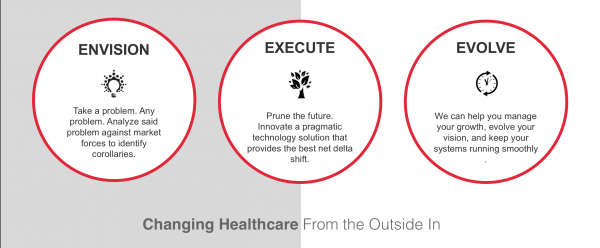When it comes to digital solutions in healthcare I hear a lot about introducing a retail strategy. Sure, there is a lot to gain by peeking our heads over the fence at other industries so that we can learn and implement successfully upon the expectations our healthcare consumers have gained with their experience outside of healthcare. After all, patients only spend 1% of their lifetime in a clinical care setting. As healthcare consumers we only have, on average, four visits to the doctor per year. We have to use digital tools to connect to them during the other 99% of the time they are interacting with everything but healthcare.
However, in the healthcare industry, we need our digital tools to achieve some pretty lofty, and oftentimes nebulous, aims. We have to innovate digital solutions around complex issues such as “patient wait time” and “readmission rates” and “enabling patient decisions around cost of care”. Sure, we have a lot to learn from retail, but how can we implement digital strategy based on an industry that doesn’t have:
- A consumer navigating price and cost issues with an industry where price and cost are typically a wildcard for everyone
- A digital journey that needs to account for the needs of both a consumer and a patient as the same person
- A digital journey that incorporates the needs of “patients by proxy” in the form of caregivers that act on behalf of a patient that is unable to act on their own accord
- Navigating a relationship where our industry is the guardian of the world’s most sensitive data
- Considering the relationship we need to form with each individual in the context of the larger aims towards population health and accountable care
Such an environment requires us to consider digital strategy in an entirely different light.
Changing Healthcare from the Outside In
When it comes to the construction of sound digital strategy, that can aptly hold ground for an organization’s social, mobile, web, portal, and loyalty activities, I prefer to change healthcare from the outside in. What does this mean, exactly? Well, first of all, it means releasing our strategy from the confines of stakeholder opinions. More so it means transforming strategy into a breeding ground for learning opportunities based off of a research exploration of data found through both internal and external analysis that comes by way of three distinct phases that are a part of a methodology that enables digital transformation.
- Envision: This first phase is the great exploration by way of diving into the data that matters. Yes, it’s important to have a stakeholder meeting in order to not only create a vision but also to ensure that those across the organization feel beholden to that vision in a meaningful way. More importantly, though, we must create a learning system. We must learn from the patient population. I’ve personally studied many, from New York City to Southern Mississippi to Los Angeles, and the only truth among all of them is that there are no two patient populations that are the same. I once had the opportunity to create digital strategy for two different health systems that were within driving distance of each other at the same exact time. Those two strategies couldn’t have been more different, and that was mostly because their patient populations were so different. We also need to study competitors. I often say that a well executed competitive analysis is, in and of itself, a competitive advantage. A peek inward at an exploration of business challenges weighed against an understanding of the market will also provide key findings. Navigating through this data without getting lost along the way takes experience, but the value of this exploration makes it the most necessary component of changing healthcare from the outside in.
- Execute: There is nothing more tragic than a digital strategy that does nothing more than sit on a shelf due to lack of proper execution. On the other hand, in my opinion, there is nothing quite as beautiful as seeing really good strategy very well executed. I have literally sat in the Apple store and the Aldi grocery chain just to watch good strategy executed with precision. The challenge lies in taking a pragmatic approach to digital strategy. By understanding the data, we can identify the top corollaries that will truly ignite change in the issues that matter. We can create a strategy that creates the patterns of decisions necessary to ignite that change. We then create a roadmap that realistically maps the tactics that drive that change over time. Such a roadmap not only has the benefit of the underlying data but also an understanding of such things as data integrations and culture changes that need to take place in order to make the strategy successful.
- Evolve: Successful digital adaptation is a marathon and not a sprint. We not only need to ensure that the digital technologies solutions that are created are reliable but we also need to evolve our vision, and resulting strategy, over time to ensure our investments receive the greatest useful shelf life. This requires us to have a data driven strategy that can not only be monitored but become a learning system itself by way of a consistent feedback loop.
Many forget that digital solutions are, in and of themselves, a breeding ground for actionable data insights. For digital strategy to be successful, and meet the needs of an industry with collaboration demands unlike any other industry, we need to change healthcare from the outside in.

